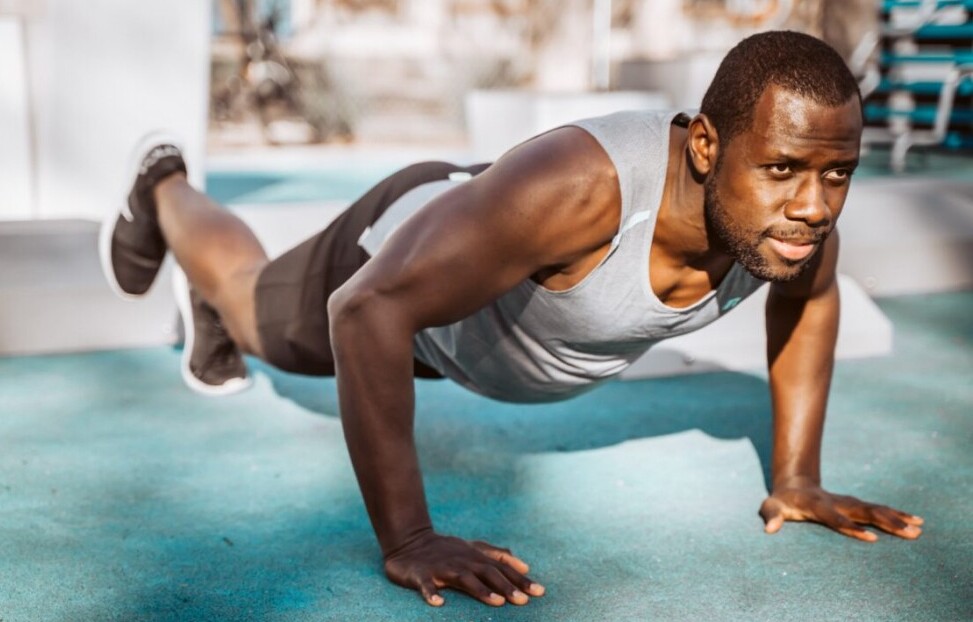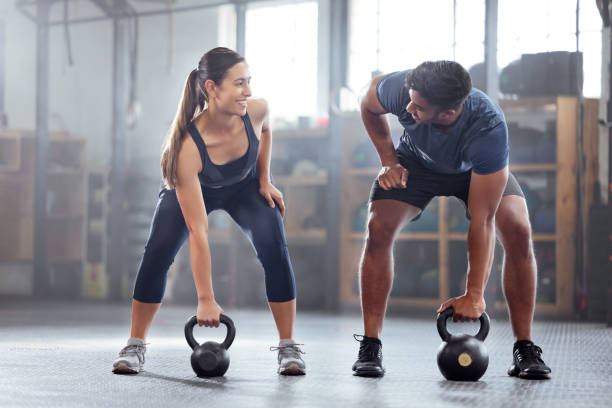5 Easy Workouts You Can Do at Home: Your Guide to a Stronger, Healthier Self

Setting the Stage for Home Workouts
The past few years have seen a rapid rise in the popularity of home workouts. With people spending more time indoors and looking for convenient ways to stay active, home workouts have become a favored fitness solution. Not only are they accessible and adaptable to any schedule, but they also offer the flexibility to customize routines to fit specific fitness goals. Whether you’re looking to build strength, improve flexibility, or simply stay active, home workouts can make fitness a seamless part of your daily life.
One of the greatest advantages of working out at home is the minimal equipment required. For many routines, a simple yoga mat, resistance bands, or kettlebell will do the trick, while bodyweight exercises require no equipment at all. Yet, the challenge often lies in maintaining discipline and motivation. Setting aside a dedicated workout space and establishing a routine can keep you consistent and help you enjoy the journey toward a stronger, healthier you.
Workout 1: High-Intensity Interval Training (HIIT)
Purpose: Short bursts, maximum effect.
HIIT workouts are perfect for those who want a powerful cardio workout that delivers results in a short amount of time. They combine intense bursts of exercise with short recovery periods, helping you burn calories and improve cardiovascular health. HIIT can be adapted for any fitness level, making it an excellent choice for beginners and experienced exercisers alike.
Sample HIIT Workout:
- Jump squats: 30 seconds
- Rest: 15 seconds
- Push-ups: 30 seconds
- Rest: 15 seconds
- Burpees: 30 seconds
- Rest: 15 seconds
- Mountain climbers: 30 seconds
Repeat this circuit 3-5 times, depending on your fitness level. HIIT sessions are usually around 20 minutes, making them ideal for busy schedules.
Workout 2: Yoga and Stretching
Purpose: Building strength and flexibility.
Yoga and stretching exercises promote flexibility, balance, and mental clarity. They’re also fantastic for building lean strength, particularly in your core and lower body. By regularly practicing yoga, you’ll increase your range of motion, reduce tension in your muscles, and benefit from improved mental well-being.
Sample Yoga Sequence:
- Cat-Cow stretch (warm-up): 1 minute
- Downward-Facing Dog: 30 seconds
- Plank: 30 seconds
- Warrior II: 1 minute each side
- Child’s Pose (cool down): 1 minute
This routine combines core strengthening and flexibility, and you can increase the duration as you get more comfortable with the poses. A yoga mat and a quiet, comfortable space are all you need to make the most of these workouts.
Workout 3: Bodyweight Circuits
Purpose: No equipment necessary.
Bodyweight circuits offer a full-body workout using only your body’s resistance, making them ideal for at-home exercise. They’re versatile, effective, and can be tailored to your fitness level, targeting multiple muscle groups while improving cardiovascular endurance.
Sample Bodyweight Circuit:
- Squats: 15-20 reps
- Push-ups: 10-15 reps
- Lunges: 10 reps per leg
- Plank: 30-45 seconds
- Glute bridges: 15-20 reps
Rest for 1 minute, then repeat the circuit 3-4 times. This routine will help you build strength and tone your muscles without needing any equipment.
Workout 4: Kettlebell EMOM
Purpose: Get your heart pumping.
Every Minute on the Minute (EMOM) workouts are a unique and efficient way to work out using kettlebells. The concept is simple: perform a set number of reps of a particular exercise at the start of each minute, then rest until the next minute begins. This style of training keeps your heart rate elevated and challenges your strength and endurance.
Sample Kettlebell EMOM:
- Minute 1: Kettlebell swings – 15 reps
- Minute 2: Goblet squats – 10 reps
- Minute 3: Kettlebell rows (5 each side) – 10 reps
- Minute 4: Russian twists with kettlebell – 20 reps
Repeat for a total of 4-5 rounds, depending on your fitness level. Kettlebell EMOM workouts are fantastic for burning calories, improving strength, and elevating your cardio.
Workout 5: Core Strength – Abs and More
Purpose: Strengthen the center of your body.
Core exercises do more than just sculpt abs; they’re essential for stability and balance. A strong core improves posture, protects your lower back, and enhances overall performance. Core workouts are easy to incorporate at home, and you can adjust the intensity to match your level.
Sample Core Circuit:
- Bicycle crunches: 30 seconds
- Leg raises: 20 seconds
- Russian twists: 20 seconds
- Plank: 30-45 seconds
- Rest for 1 minute, then repeat 3-4 times.
These core exercises will help you build a solid foundation of strength and stability. They can be done on a yoga mat, making them convenient for any home workout setup.
Importance of Warm-Up and Cool-Down Routines
Every workout should start with a warm-up and end with a cool-down. Warming up prepares your muscles for activity, increases blood flow, and reduces the risk of injury. Cool-down exercises help bring your heart rate down gradually and promote muscle recovery, making it easier to bounce back for your next session.
Sample Warm-Up:
- Jumping jacks: 1 minute
- Arm circles: 30 seconds
- Leg swings: 30 seconds
Sample Cool-Down:
- Standing hamstring stretch: 1 minute each side
- Quad stretch: 1 minute each side
- Shoulder stretch: 1 minute
Tracking Progress for Continuous Improvement
Tracking your progress can keep you motivated and accountable. Consider keeping a workout journal or using a fitness app to note down reps, weights, and time. This will help you see improvements over time and keep pushing forward.
Nutrition and Hydration: Fueling Your Body for Home Workouts
Nutrition is a cornerstone of any fitness journey. For effective workouts, aim for a balanced diet that includes lean proteins, complex carbohydrates, and healthy fats. Staying hydrated is equally crucial, especially when working out at home, where it’s easy to overlook water intake.
Mental Health Benefits: Moving for the Mind as Well as the Body
Exercise isn’t just for the body—it’s a powerful tool for mental well-being. Physical activity releases endorphins, the body’s natural mood lifters, which can reduce stress and anxiety. Home workouts provide a safe space to prioritize your mental health, allowing you to work out in a way that feels comfortable and empowering.
Incorporating Rest Days for Recovery and Strength Building
Rest days are essential for muscle recovery, allowing your body to rebuild and strengthen. Incorporate at least one or two rest days each week. These are perfect for light stretching or a short walk if you want to stay active.
Common Obstacles in Home Workouts and How to Overcome Them
Common challenges in home workouts include lack of space, distractions, and difficulty staying motivated. Setting up a dedicated workout space—even a corner of a room—can help you get into the right mindset. Eliminating distractions, like turning off your phone, and using a set schedule can also increase your commitment.
Creating a Dedicated Workout Space at Home
Having a designated workout space can make all the difference. It signals to your brain that it’s time to exercise and helps you stay focused. Whether it’s a spare room or just a mat in the living room, creating a workout zone helps set the tone for consistency.
Building Accountability: Online Communities and Workout

Partners
Accountability is often key to maintaining motivation. Joining an online fitness community or finding a workout buddy can help you stay committed. Sharing progress or participating in fitness challenges can provide extra encouragement and help make workouts more enjoyable.
Setting Realistic Goals and Celebrating Milestones
Setting achievable goals is important for long-term motivation. Break down larger fitness goals into smaller, measurable milestones, and reward yourself for progress. This could be as simple as a new workout top or a relaxing day off. Celebrating your successes, no matter how small, keeps you motivated and excited about your fitness journey.
Adapting Workouts for Varying Home Environments
If space is limited, focus on compact exercises like bodyweight circuits or yoga flows. If noise is an issue, stick to low-impact movements that won’t disturb others. The versatility of home workouts means you can adapt routines to any environment.
Tips for Maintaining Long-Term Motivation
To stay motivated in the long run, mix up your workouts, try new routines, and keep challenging yourself. Fitness is a journey, and keeping things fresh and enjoyable will help you stick with it.
